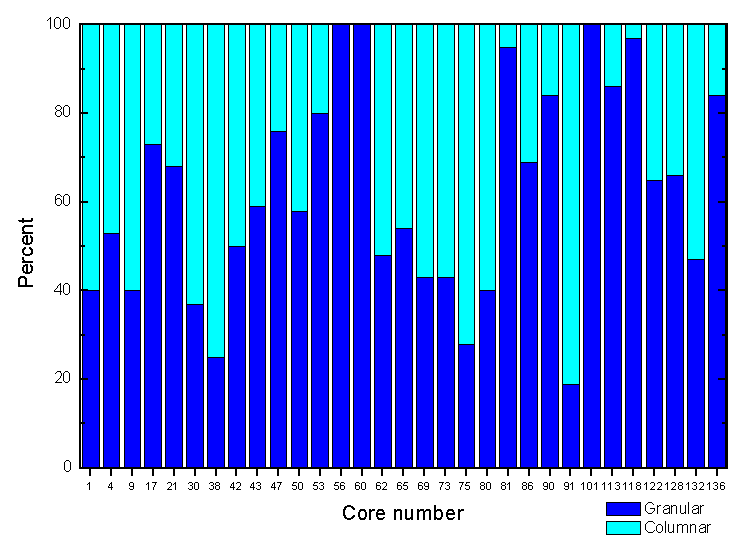|
Ice cores: Crystallography |
|
|
Ice structure was determined from an analysis of photographs of vertical thin section photographs. As the plot below indicates, there was a preponderance of granular ice. Indeed 65% of the cores were more than half granular ice and approximately 10% of the cores were completely granular.

Summary of ice types determined from the
cores taken for crystallographic analysis.
In this analysis granular ice is defined to include snow ice in addition to
frazil, which comes in a number of textural variants. These include frazil
of variable grain size, sometimes enclosing larger crystal plates, plus
platelet ice and banded ice. A necessary condition of frazil is its
nucleation and crystallization occurring freely in the water column. This
mode of formation certainly explains the origin of the smaller grains or
crystals of frazil as well as the large plate crystals. Banded frazil occurs
as plates which, following nucleation, are advected upwards to the underside
of an existing ice sheet. The plates generally orient themselves in a way
that favors c-axis vertical orientation. The precise mechanism of nucleation
of platelet ice is still being debated. One view based on observations in
McMurdo Sound (Gow, personal communication) is that platelet ice originates
by direct attachment of dendrite crystals to the underside of an ice sheet
where subsequent freezing of the interstital water causes the whole mass of
crystals to solidify. In a way platelet ice can be considered transitional
to congelation ice.